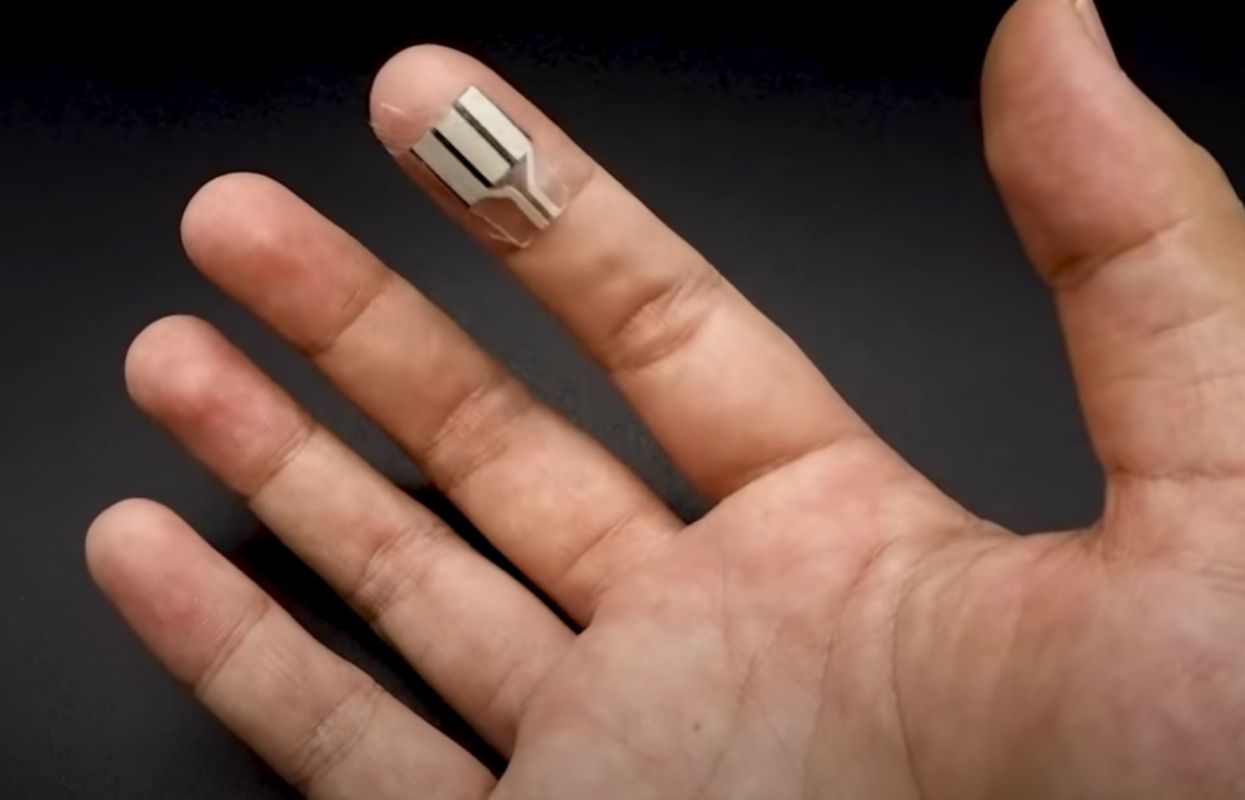A new wearable device generates energy from the sweat droplets on your fingertips, and it could one day replace batteries in items like Fitbits.
A team of researchers from UC San Diego has developed a plaster-like strip to be worn on the finger, which can produce electricity whenever it is pressed and also convert it from excreted sweat.
Even when the wearer is asleep, they can produce small amounts of electricity — a more reliable technology than other renewable energy sources like solar or wind, which are currently weather-dependent.
The team is headed up by Joseph Wang, who first made a breakthrough in wearable energy devices eight years ago with a rechargeable battery powered by a temporary tattoo.
Since then, Wang has helped to develop stretchable biofuel cells, which can withstand stretching, indentation, and twisting while worn on the skin.
Sweat-based energy capture has also been paired with textiles. The team at UC San Diego created a T-shirt last year with biofuel cells in the chest, which convert sweat into electricity as the wearer walks or runs.
But the finger strip is a significant jump forward, as it harnesses the sweatiest part of the body — the fingertips have the highest concentration of sweat glands — with minimal effort.
Whereas previous wearables required a heavy workout, just 10 hours of sleep while wearing the finger strip was sufficient to produce 400 millijoules — enough energy to fuel a battery-powered watch for 24 hours.
This development could be transformative for the future of wearable devices, which are currently hampered by battery size.
Power capability is linked to battery volume, meaning that the more sophisticated the tech, the bulkier the item becomes.
Transitioning to sweat-based charging could make devices like heart rate monitors, hearing aids, and augmented-reality contact lenses less cumbersome to wear as more power-hungry features emerge.
It could also replace lithium polymer batteries, which power devices like Fitbits. Mining for lithium has been linked to water depletion and pollution, leaving entire communities in Chile and Argentina without safe drinking water.
Friends of the Earth has warned that demand for lithium is increasing as more consumers acquire smartphones and electric cars.
Switching to alternative wearable energy sources could stall this growth, on top of the increased battery collection and recycling recommended by the charity.
"What we want to achieve in the end is to have a system where you don't need to think about charging anymore," Wang told Government Tech. "We envision it to be more flexible, more conformable to the human body, to be more durable and eventually self-sustainable."
Join our free newsletter for weekly updates on the coolest innovations improving our lives and saving our planet.









